Fashion is a highly competitive eCommerce sector that’s always changing and evolving.
You’ve poured your heart and soul into creating a stunning collection, but are your customers walking away without purchasing their favorite dress?
It’s time to transform those window shoppers into devoted fashionistas.
Conversion Rate Optimization (CRO) is all about increasing conversions and maximizing ROI.
In an era where digital storefronts are as crucial as physical stores, CRO helps build trust and credibility between consumers and brands by enhancing visibility, improving customer engagement, and fostering loyalty.
Let’s talk about some key secrets that help increase fashion e-commerce conversion rates with 10 key strategies.
Visitors leave your website without taking action?
They don’t trust your site or feel urgency to act. WiserNotify builds both, turning doubt into action & visitors into customers.
Average Conversion Rate for Fashion E-Commerce
The average conversion rate for fashion e-commerce brands is around 3.57%, and the global e-commerce market is on course to reach $1,222.32 billion in the next few years.
However, it’s crucial to note that this can vary widely based on several factors, from target audience to product categories and user experience.
It also contains factors such as website performance, cart abandonment, and other elements that affect conversion rates in the fashion industry.
Understanding Fashion E-commerce Conversion Metrics
Measure the effectiveness of your fashion eCommerce store by analyzing key performance indicators, like –
- Conversion rate: It indicates the percentage of website visitors who complete a purchase.
- Average Order Value (AOV): It’s the average value of each transaction spent by your customers.
- Cart Abandonment Rate: The percentage of shoppers adding items to their cart but not finalizing the purchase.
- Bounce Rate: The percentage of visitors who left the website without taking any action.
- Customer lifetime value (CLTV): It’s the total revenue generated by a customer over their lifetime.
Analyzing these metrics can help you identify areas of improvement and measure the impact of your optimization effect.
Before you start working on improving the conversion rate for fashion brands, these are some of the best strategies you can try out.
We’ll talk about each other next.
1. Mobile-Friendly Website
With 75% of shoppers using mobile devices to make a purchase, creating a mobile-friendly website is essential and a top priority in your strategy.
Mobile-friendliness makes your website page appear clearer, more concise, and easier to read on small screens.
That means making your website load faster, making navigation easy, using responsive design, ensuring clear copies, and streamlining the purchase process.
When you pair these with a seamless shopping experience, user-friendly functionality, personalized recommendations, and live support, it improves average conversion rates.
Zaful’s mobile-friendly website provides a seamless experience to customers.
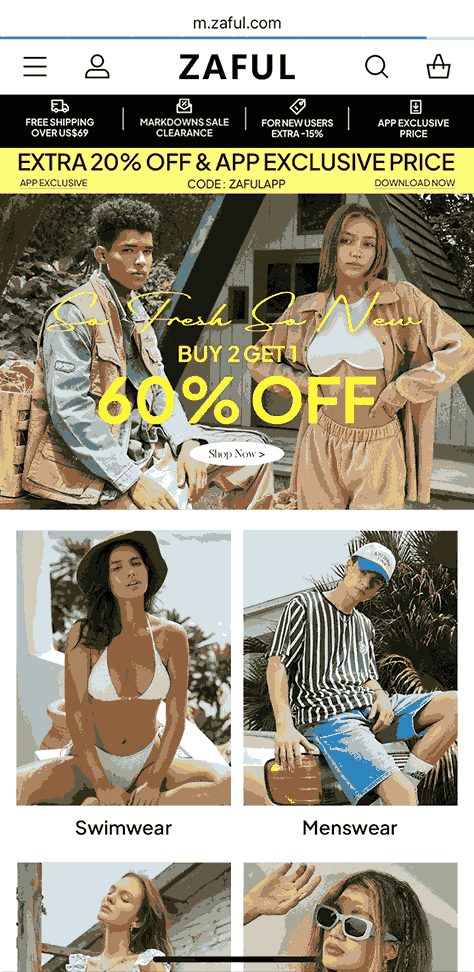
Also, check: 50 Tested Conversion Optimization Tools to Boost Sales
2. Optimized Product Pages
The next step is to ensure you optimize product pages with engaging and informative product descriptions that highlight the key benefits and features of your product.
This means using the right keywords, high-quality images, product titles, descriptions, customer reviews, and ratings.
Moreover, it highlights unique selling points, materials, care instructions, and fit information using storytelling elements and addresses potential customer’s concerns to create a compelling narrative.
GymShark’s inspiring image gallery makes it noticeable and one of the best product page formats used by fashion ecommerce brands.
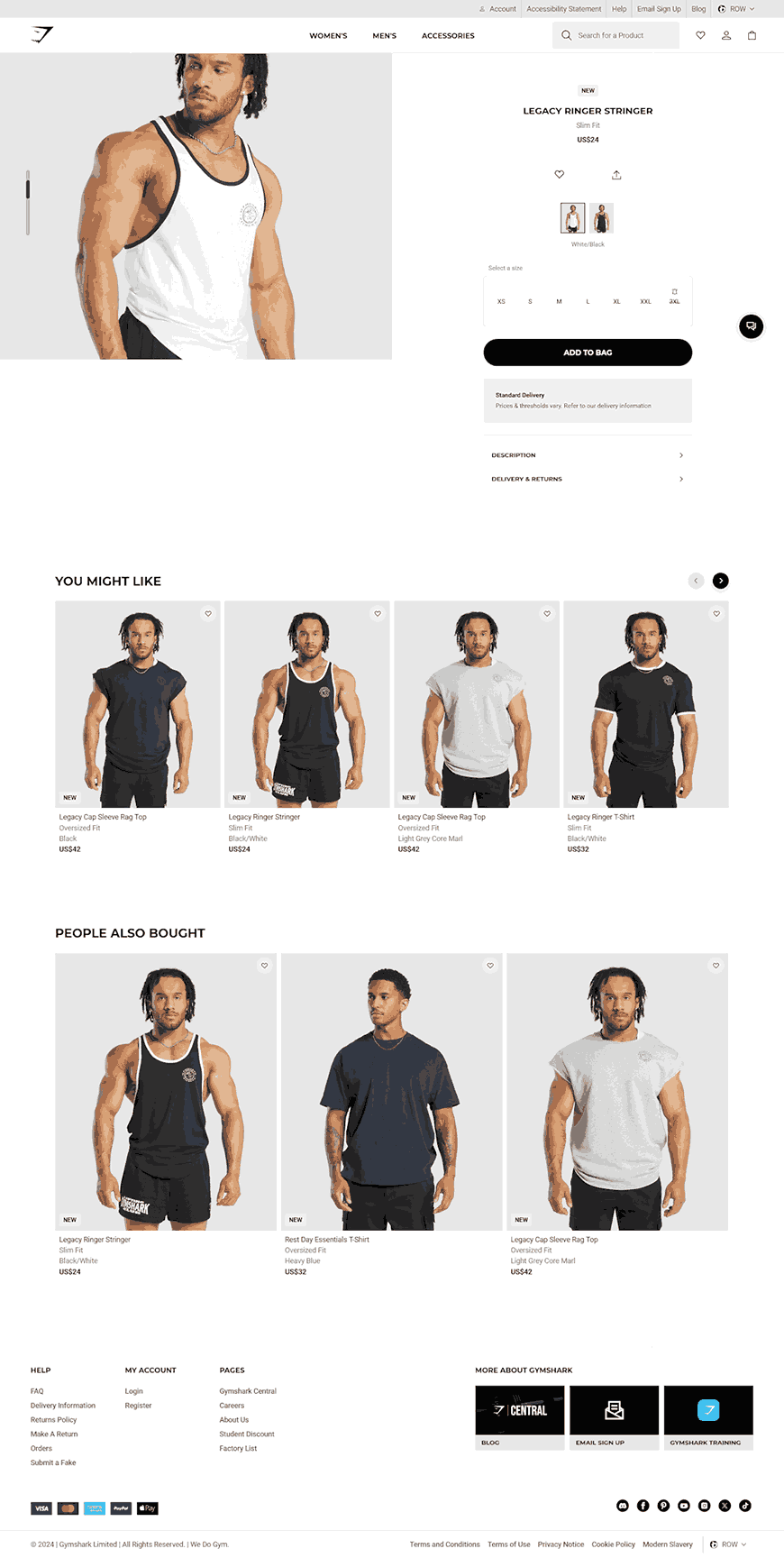
3. Leverage User Generated Content (UGC)
User-generated content brings authenticity and influences customers’ purchasing decisions.
By showcasing authentic reviews and ratings by existing customers, you build trust, credibility, and a sense of community among online shoppers.
Encourage customers to share their looks, outfits, and experiences with your products on social media platforms, websites, and other channels.
Encourage them to use a specific hashtag when sharing content.
Moreover, you can collaborate with fashion influencers and experts to generate high-quality reviews and create authentic brand narratives that resonate with your target audience.
Torrid displays reviews and ratings from customers on its website to build trust among shoppers.
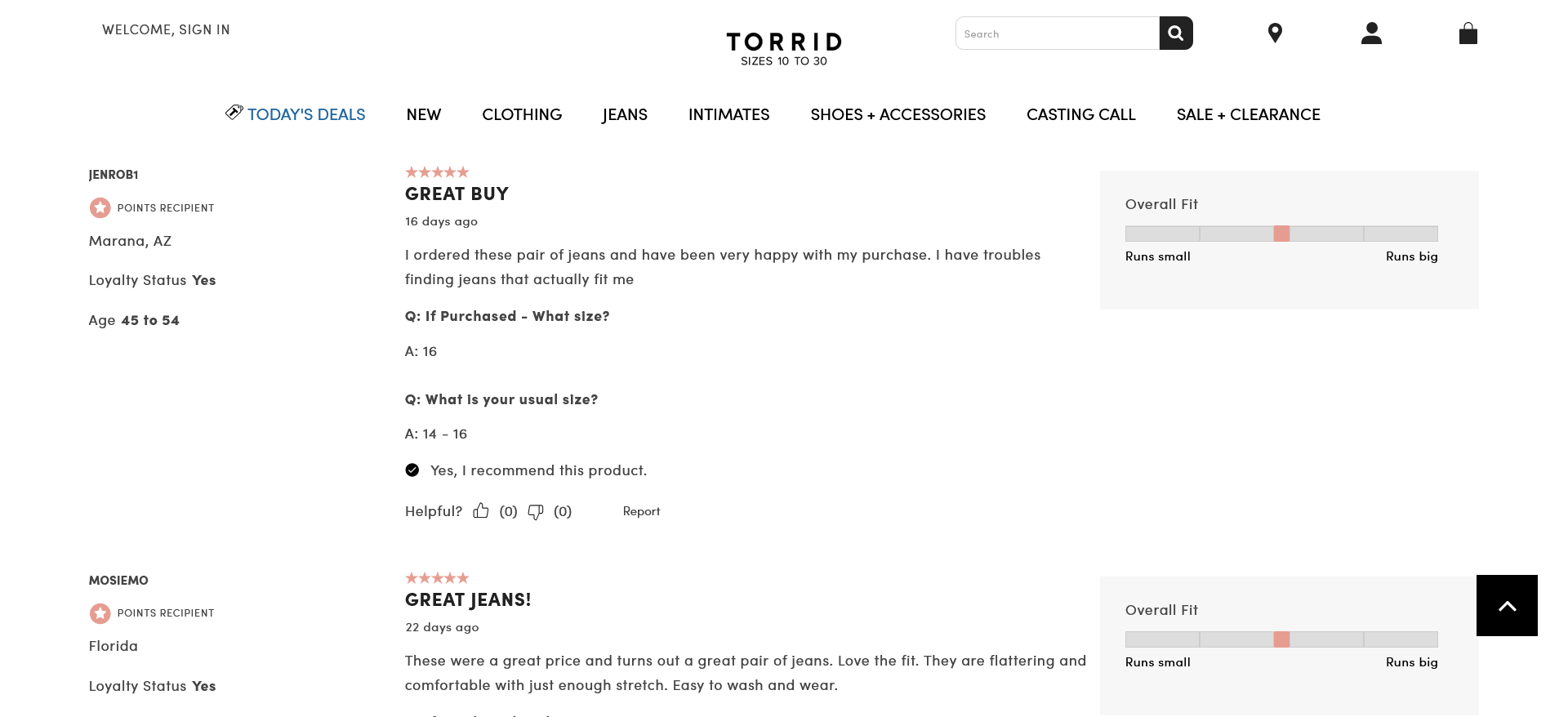
4. Optimize Checkout Process
A seamless checkout experience is crucial to convert potential visitors into buyers. Streamline the process by minimizing the number of steps involved for a faster checkout process.
Also, offer guest checkout options to reduce friction and allow customers to purchase without creating an account.
Moreover, it provides them with multiple secured payment methods to cater to different customer preferences.
Display clear progress indicators to reassure customers about their order status and provide a more convenient experience.
Make sure your checkout process is simple and easy to understand, with real-time shipping estimates and options for expedited delivery that significantly enhance your conversion rates and reduce cart abandonment.
Everlane provides a step-driven checkout process that makes it simple and easy for customers to understand.
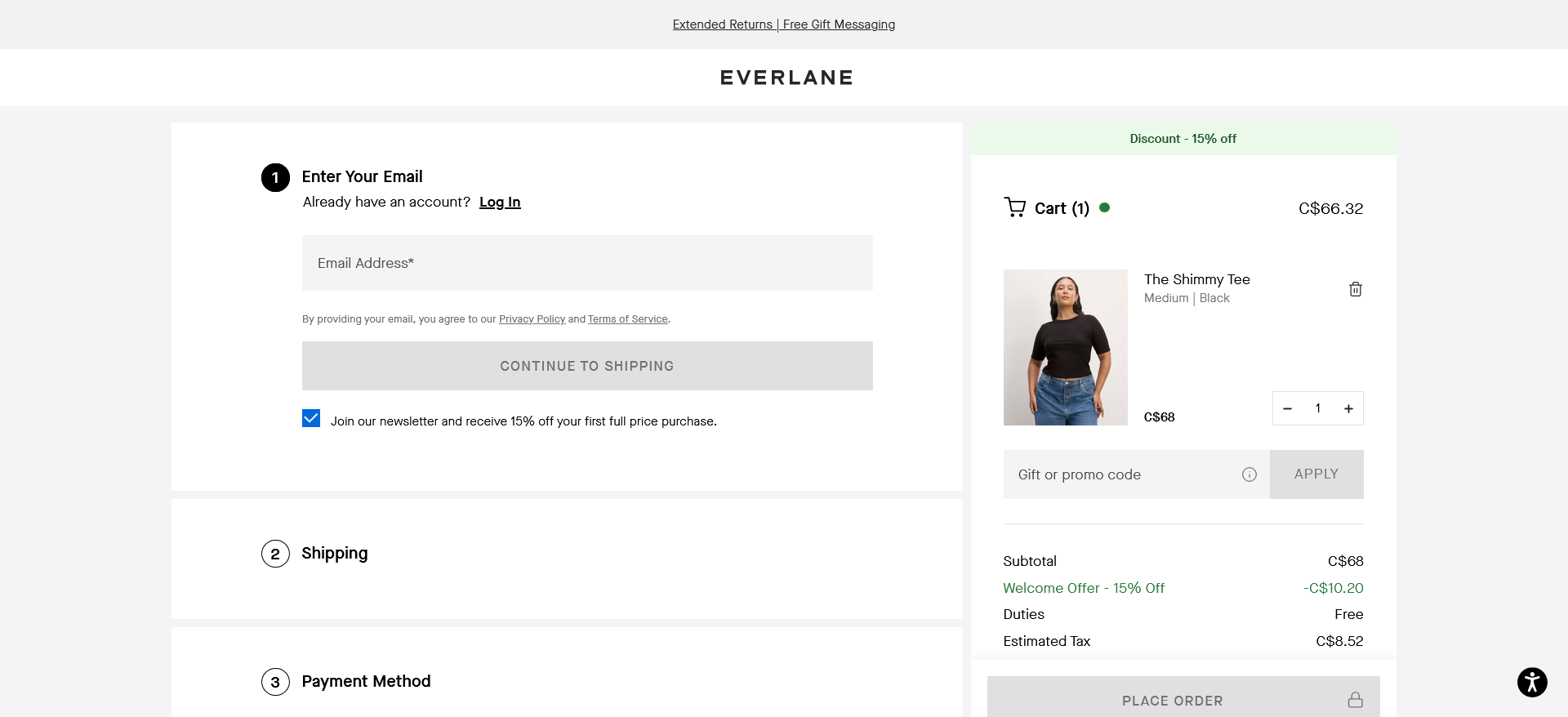
Learn more here: 12 Actionable Tactics to Increase Checkout Conversion Rates
5. Stellar Search and Filtering Functions
A robust search and filter function improves customer experience by empowering customers to quickly find desired products using advanced search functionalities.
Here are some ways to equip your store with smart search features –
- User-friendly search bars positioned at the top of every page
- Autocomplete suggestions to refine their search
- Multiple search filters by various attributes such as sizes, colors, price range, brand, material, and occasion.
- Ensure filter options are easy to understand and apply
Using the smart search filter can improve user experience and boost conversions for your online shopping store.
Blooming Dale’s allows customers to filter out products based on size, style, color, price, and more.
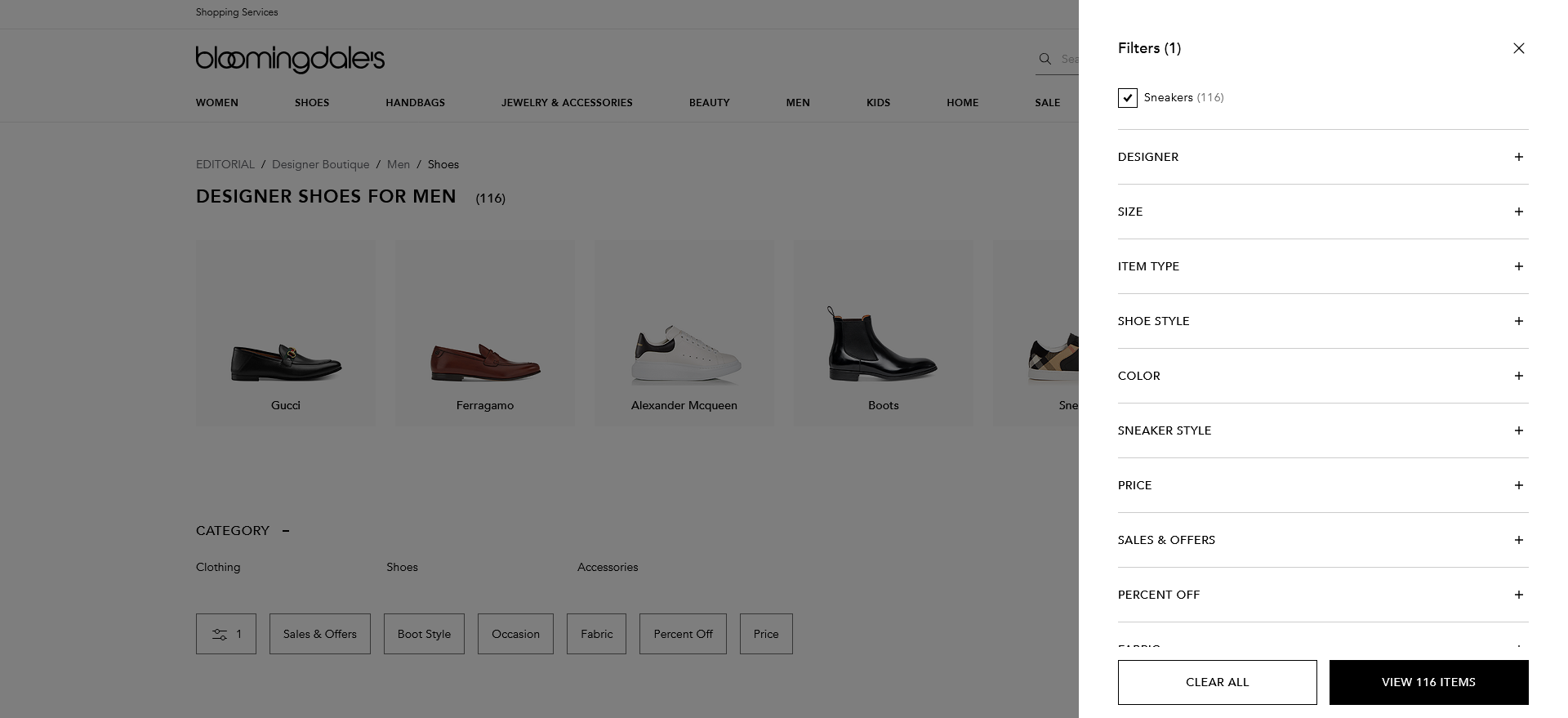
Build trust & FOMO
Highlight real-time activities like reviews, sales & sign-ups.
6. Personalized Shopping Experiences
Use customer interactions and data to craft shopping experiences that feel like they were designed for them.
From personalized product recommendations to customized styling advice, ensure your customers feel valued and understood.
By leveraging AI and customer data, you can tailor your marketing efforts to individual preferences.
Segment your customer based on demographics, purchasing behavior, and browsing history to deliver targeted email campaigns, exclusive offers, and personalized lookbooks that resonate with each segment.
By making customers feel valued, you can foster loyal customers and increase their propensity to spend.
Here is an example from Stitch Fix that provides personalized recommendations by asking shoppers to take a style quiz test.

Here you can dive more: How to Boost eCommerce Conversion through Personalization.
7. Simple Return and Shipping
Customers always look for easy returns and shipping options.
Offering fast and affordable shipping options to meet customer expectations. Clearly outline shipping timelines and offer tracking information.
Moreover, a hassle-free return policy should be implemented to build customer trust and loyalty.
Clearly outline return conditions and processing times, and consider providing different options like exchanges or store credit for added convenience.
Additionally, providing free shipping eliminates a potential barrier to purchase and incentivizes customers to add more items to their cart.
Loft’s clear and easy return policy makes it hassle-free for customers to return.
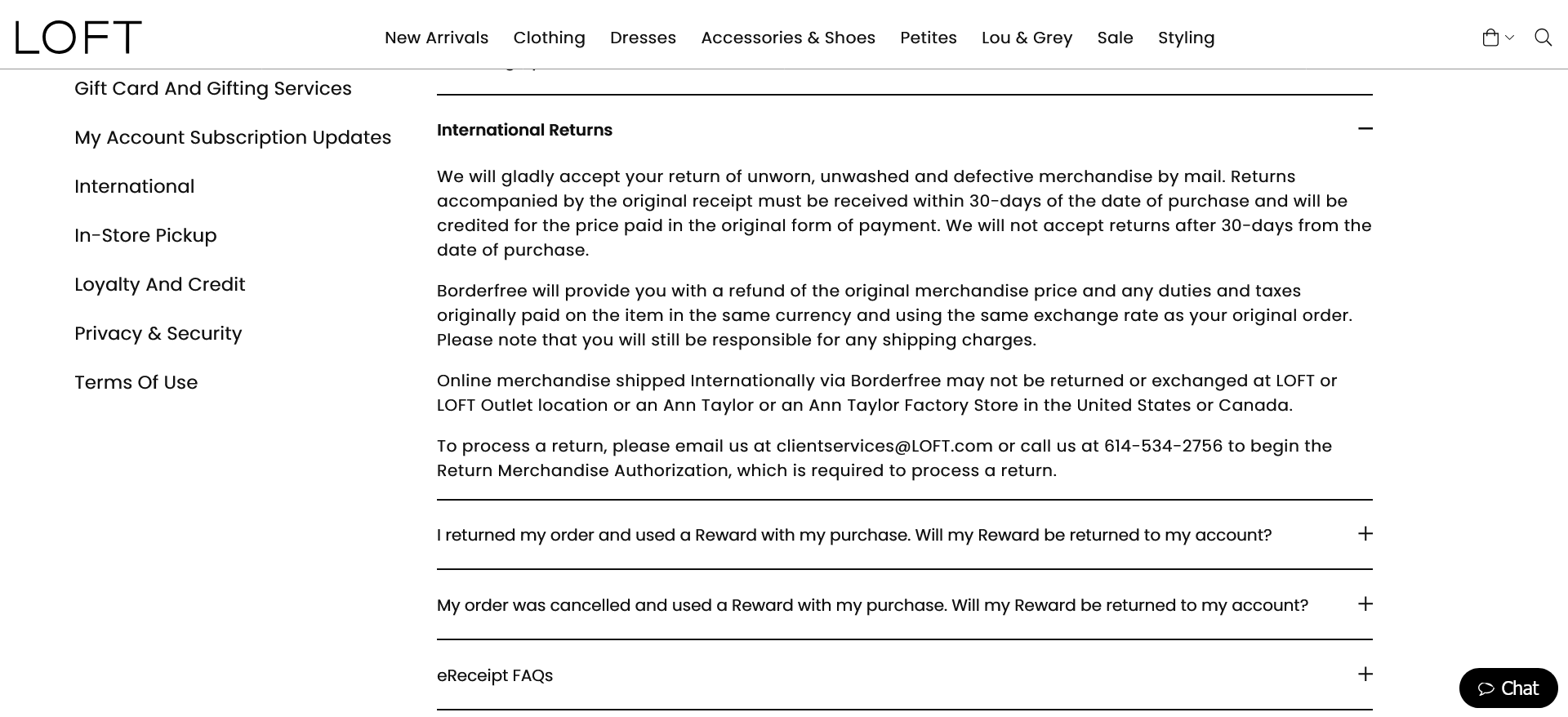
8. Visual Appeal
In the world of fashion, visuals are everything. High-quality, captivating visuals are the cornerstone of a successful eCommerce store, by investing in professional photography that highlights every intricate detail from the delicate stitching to the luxurious fabric.
Go beyond static images and incorporate interactive elements that bring the product to life.
Let customers check out the products by allowing them to zoom in and out and offering different visual angles of your products.
Moreover, create lifestyle imagery that showcases your products in real-life settings.
Remember, first impressions matter.
Here’s an example from Clavin Klein using high-quality visuals.
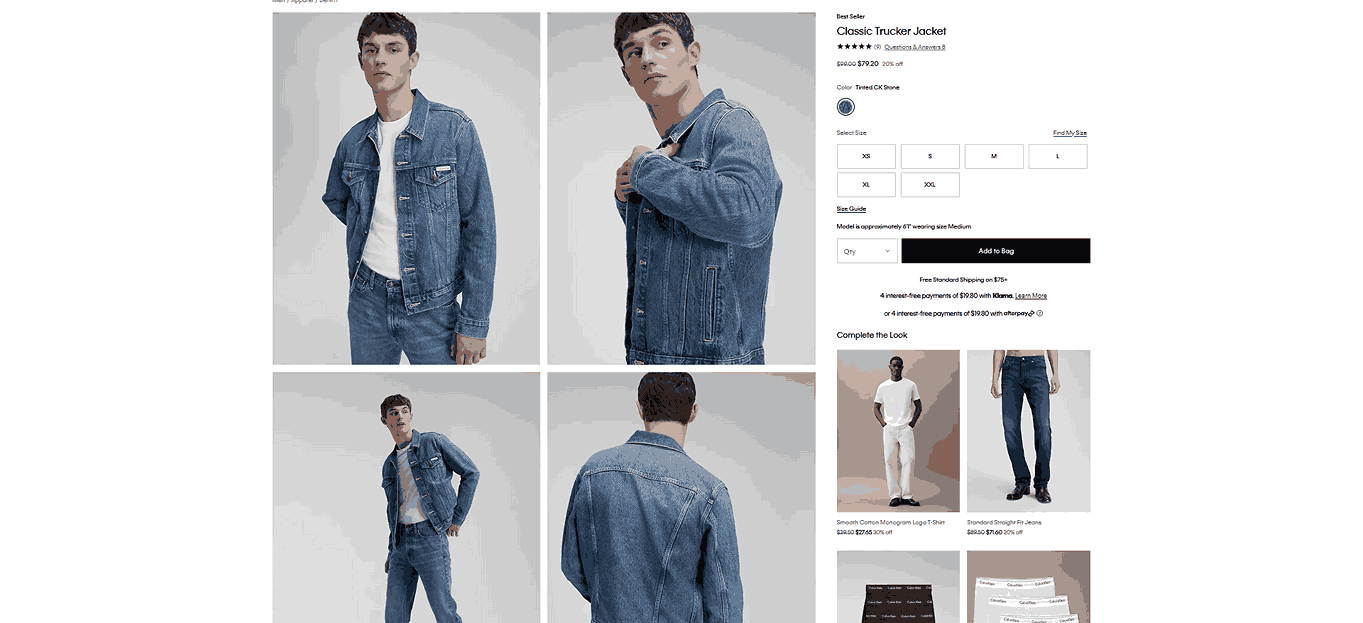
9. Product Discovery
Your fashion store should not only demonstrate its fashion expertise but also provide customers with enjoyable shopping experiences.
If the perfect product that matches a customer’s style is hard to find, they might leave and find other options.
Product discovery makes it easier for the customer to discover clothes that fit their specific taste.
Different strategies like curated collections, trend spotting, shopping the look, and shopping our feed section on your store can provide a delightful shopping experience.
Moreover, you can also create seasonal-based collections like summer vacation or Christmas themes.
Here’s an example of Lulus helping online shoppers discover products based on collections.
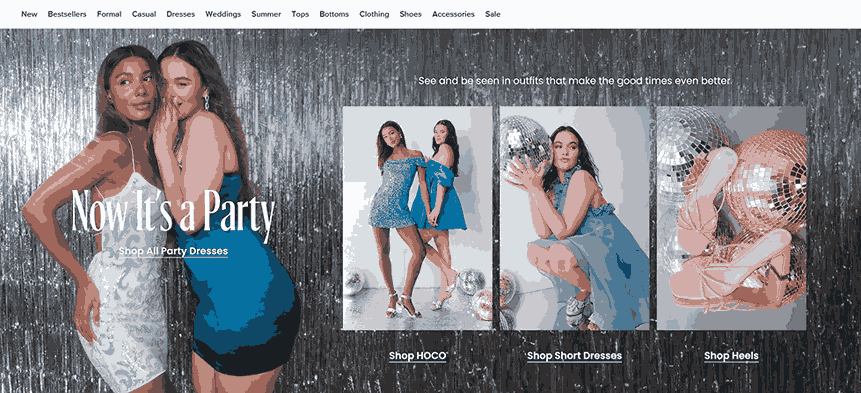
10. Offer Discounts and Coupons
Everyone loves a good deal. Discounts and coupons encourage customers to come back and shop with you again.
Offer them exclusive deals based on purchased value to encourage larger orders or package complementary products together at a discounted price to increase the average order value.
Further, create a sense of urgency with time-sensitive promotions like limited stocks, limited edition collections, time-limited offers, etc.
In addition, loyalty programs should be run to encourage repeat purchases and foster brand loyalty.
Here are Pretty Little Things offering discounts on women’s fashion products.
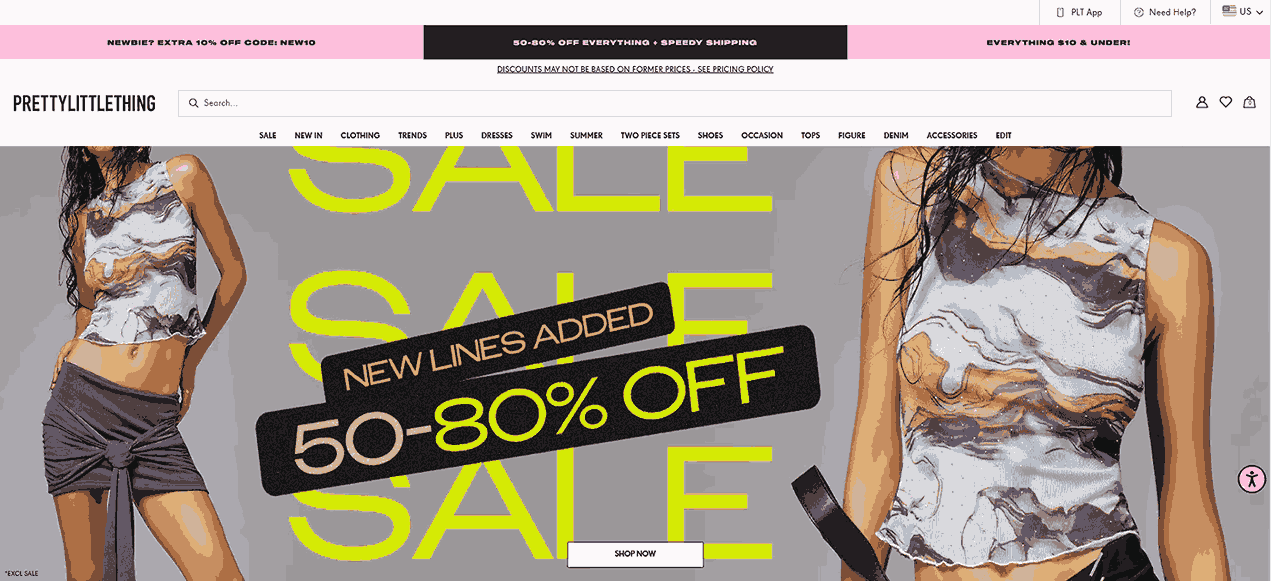
Conclusion
The conversion rate for your fashion e-commerce online business is crucial, but remember that it is more about improving the customer experience.
You might not always know what online shoppers want, but you can focus on transforming casual online shoppers into loyal customers with a strategic approach.
By implementing these conversion rate strategies, you can improve the conversion rate for your fashion eCommerce stores.
Remember, the key to success is to understand your potential buyers, create a seamless shopping experience, and continuously refine your strategies.
Prioritizing mobile optimization, and site performance, showing compelling visuals, and creating personalized shopping experiences can improve e-commerce conversion rates for online businesses.






